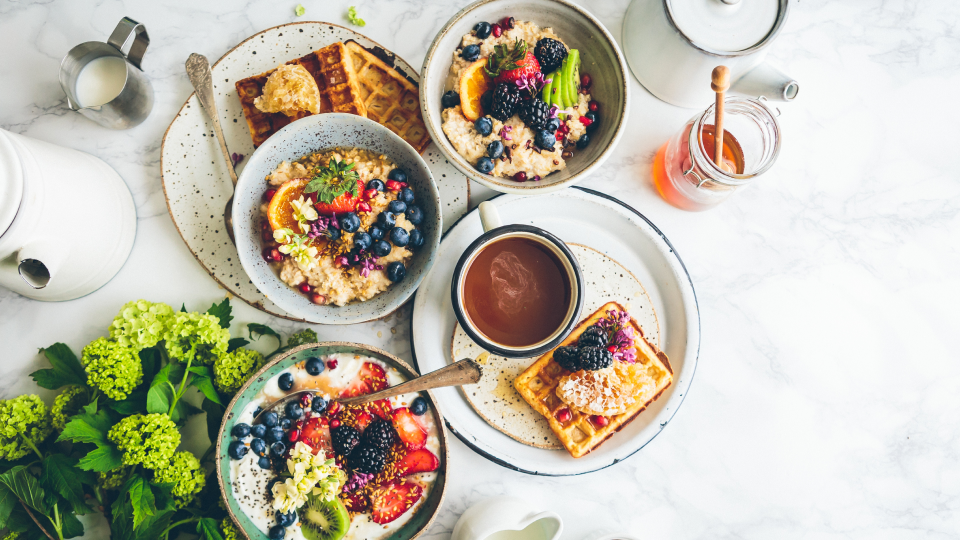What we feed our body affects our blood sugar levels, among many other things. So, eating healthy meals would make sense, right? What about changing your diet completely and going vegan? We’ve heard all about the hype and rave of veganism, but before jumping in, some things should be considered.
In this blog post, we’ll explore how a vegan diet can help lower glucose levels, provide tips on how to get started, and give you some things to look out for to feel at your best.
What is a vegan diet?
A vegan diet, in a nutshell, is not eating any products derived from animals. This includes items like meat, dairy, eggs, and honey. Instead, it focuses on whole plant foods such as fruits, vegetables, whole grains, legumes, nuts, and seeds.
Following a vegan or plant-based diet has been all the rave and it can bring many health benefits. It can also require you to plan your meals ahead and be aware that since you are not eating animal products, you may need to include certain food in your diet to be sure you still get all the nutrients your body needs.
Benefits of a vegan diet
Studies have shown that a vegan diet can provide numerous health benefits. These include:
Reducing the Risk of Heart Disease
Heart disease is the leading cause of death worldwide. A vegan diet has been shown to reduce the risk of heart disease by lowering cholesterol levels, blood pressure, and inflammation (1).
Lowering the Risk of Cancer
A vegan diet has been linked to a lower risk of certain types of cancers, including colon, breast, and prostate cancer(2).
Improving Digestive Health
A vegan diet is high in fiber, which can improve digestive health and reduce the risk of constipation, hemorrhoids, and diverticulitis.
Managing Diabetes
A vegan diet can help manage diabetes by improving insulin sensitivity and reducing the risk of complications such as nerve damage, kidney disease, and blindness.
How a Vegan Diet Can Help Glucose Levels?
A vegan diet can help lower glucose levels by providing a low glycemic load and high fiber content. This means that the body absorbs glucose more slowly, preventing spikes in blood sugar levels. Following a vegan diet often promotes weight loss, which can improve insulin sensitivity.
A study published in the National Library of Medicine found that a vegan diet was more effective at reducing hemoglobin A1c (HbA1c) levels (a measure of long-term glucose control) than a conventional diet in people with type 2 diabetes. And that going vegan lowers the risk of developing type 2 diabetes (2, 3).
What Nutrients Do Vegans Miss In Their Diets?
Some of the nutrients our bodies need may be a bit more difficult to get enough of when following a vegan diet. Which is why it is highly recommended to plan your vegan meals ahead and incorporate the right nutrient-rich foods into your meals.
Studies have found that being vegan or following a vegan diet increases the risk of becoming deficient in the following nutrients (4):
- Vitamin B12
- Vitamin D
- Iron
- Calcium
- Zinc
- Iodine
- Omega-3 fatty acids
But this is nothing to worry about! When planning your vegan meals just include ingredients rich in these nutrients to be sure to get everything your body needs.
How to Get Started on a Vegan Diet to Lower Glucose Levels
If you are interested in trying a vegan diet to lower glucose levels, here are some tips to get started:
Start slowly & check ingredients
Transitioning to a vegan diet can be overwhelming. So start slow! Check out what vegan products your local store offers to start incorporating more plant-based foods into your diet and gradually reducing your intake of animal products. You don’t need to go fully vegan from day 1. Change out a few things per week and work your way up from there.
Pro-Tip: We recommend checking the ingredients list of the vegan products you buy, since many can include lots of additives and some form of starch for a nice, firm structure. Starch will likely increase blood sugar. Also make sure you avoid highly processed foods (such as some meat replacements) as they also might spike your glucose levels.
Plan your meals
Planning ahead can not only help you stick to this new lifestyle change but can also ensure that you are getting all the nutrients your body needs. Focus on whole plant foods such as fruits, vegetables, whole grains, legumes, nuts, and seeds.
Get enough protein
Protein is an essential nutrient that is often associated with animal products. However, there are plenty of plant-based sources of protein, including tofu, tempeh, lentils, chickpeas, and quinoa. Make these tasty foods part of your meals!
Pro-Tip: IIt's always smart to check for fiber content in the nutrient table of the vegan product you are buying. We recommend a 5:1 ratio of carbs : fiber to support a balanced blood sugar.
Consider supplementation
Some nutrients, such as vitamin B12 and omega-3 fatty acids, are difficult to obtain from a vegan diet. Consider taking supplements to ensure that you are getting all the nutrients your body needs. It’s always best to talk to your doctor first to see what supplements would work best for you.
See the effects of a vegan diet in an experiment

Ready to see how changing to a vegan diet can change your blood glucose levels? Make an experiment with your Hello Inside app ,
to compare two different foods and see which one your body responds to better. Here are some easy steps to follow when comparing the effects of two foods:
- Try to keep experiment conditions the same: In a perfect scientific experiment, starting conditions when testing things are identical. Unfortunately, trying to achieve that with our body or environment is not always possible. Try your best to replicate your routine when you test different food items. This should be enough for you to see a change in your glucose levels.
- Make small changes: When trying to see the different effects of foods on your body, it’s best to do it in small steps. Start by changing your regular milk products to vegan alternatives that are rich in protein and high quality fats, for example. Keep everything else the same. Then you can really identify what works best for you!
Give it a try!
Summary: Everybody is different, find what works for you
A vegan diet can provide numerous health benefits, including reducing the risk of heart disease, cancer, and diabetes. It can also help lower glucose levels by providing a low glycemic load and high fiber content. If you are interested in trying a vegan diet to lower glucose levels, start slowly, plan your meals, get enough protein, and experiment to see which foods work best for you.
As always, consult with your healthcare provider before making any significant changes to your diet or lifestyle.






